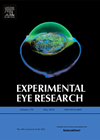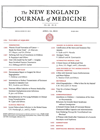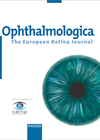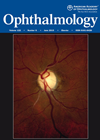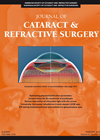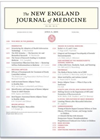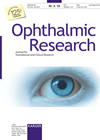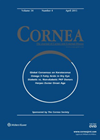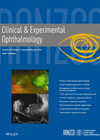
Journal Reviews archive for 2015
Transfected RPE cells inhibit AMD in rats
Age-related macular degeneration (AMD) is a leading cause of blindness in the elderly. Wet AMD is characterised by choroidal neovascularisation, new vessels into the retina, leading to leakage and tissue damage. Many proangiogenic factors particularly vascular endothelial growth factor (VEGF)...
Persistence of Ebola virus in ocular fluid during convalescence
The most recent Ebola outbreak has infected over 26,300 patients, but also resulted in the highest number of survivors in history. Uveitis has been described during the convalescent period, but Varkey and colleagues report, for the first time, finding viable...
Stereotactic radiotherapy for polypoidal choroidal vasculopathy
Polypoidal choroidal vasculopathy (PCV) is a variant of neovascular AMD. It is a disease of choroidal vasculature characterised by abnormal branching vascular network with aneurysmal dilatations (polyps). Features of PCV include pigment epithelial detachments (PED), subretinal fluid (SRF) accumulation and...
Outcomes of ‘treat and extend’ for neovascular AMD
The authors report on 24-month outcomes of anti-vascular endothelial growth factor (anti-VEGF) therapy using a ‘treat and extend’ regime for treatment-naïve neovascular age-related macular degeneration (nAMD). Data for this study was collected from the Fight Retinal Blindness observational registry based...
Association between smoking and uveitis
This is a retrospective, population-based, case-control study from the general Kaiser Hawaii population. Over a two year period (1 January 2006 to 31 December 2007), there were 100 confirmed incident cases of uveitis. Two control groups were created, with 522...
Toric intraocular lens rotation related to the capsulorrhexis
The risk factors for postoperative rotation in the early post-operative period; a longer axial length, younger patients, and with the rule astigmatism as described by Miyake T et al. (JCRS 2014) in a case series of six eyes. This letter...
Closed-chamber haptic re-externalisation for posteriorly displaced sclerotomy and inadequate haptic tuck in glued posterior chamber intraocular lenses
This technique (online video http://jcrsjournal.org) emphasises the importance of both symmetrical and sufficient anterior placement of sclerotomies to externalise an adequate length of the haptics, which in turn provides good centration and stability of the intra-ocular lens (IOL). The authors...
How much money is wasted on tests prior to cataract surgery? And why?
For routine cataract surgery, numerous studies have found that preoperative testing does not contribute usefully to safety or surgical success. Despite such guidelines, tests ordered for patients prior to phacoemulsification in the US remains high. To quantify the associated costs,...
Influence of overall intraocular lens diameter on rotational stability
It has been shown that approximately one in three patients undergoing cataract surgery have >1.0D corneal astigmatism and managing this during surgery is important to achieve good refractive outcomes. One of the widely used ways of reducing preoperative astigmatism during...
Tear film thickness after treatment with artificial tears in patients with moderate dry eye disease
In recent years artificial tear drops addressing tear film osmolarity have come onto the market. Increased tear evaporation and reduced tear volume results in tear hyperosmolarity. This triggers an inflammatory process leading to apoptosis of goblet and epithelial cells. Trehalose,...
Oral omega-3 fatty acid treatment for dry eye in contact lens wearers
This study evaluates the effect of dietary omega-3 fatty acid supplementation of dry eye symptoms, tear film tests, and conjunctival impression cytology in patients with contact lens wear-associated dry eye. In this randomised double-blind, multi-centred trial, contact lens wearers (n=...
Micropulse vs. continuous wave trans scleral diode cyclophotocoagulation in refractory glaucoma
Continuous wave cyclophotocoagulation (CWCPC) delivers continuous high intensity energy to the ciliary body in an attempt to reduce aqueous secretion and hence lower IOP. It is often used as a treatment of last resort due to the potential side-effects of...

